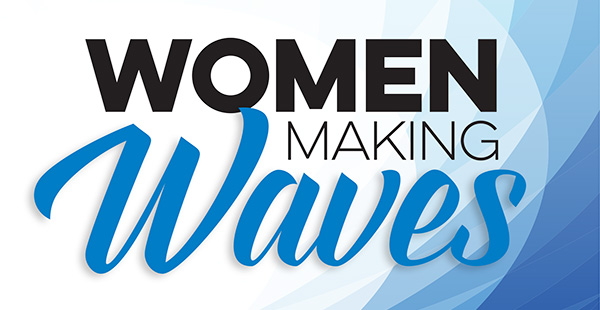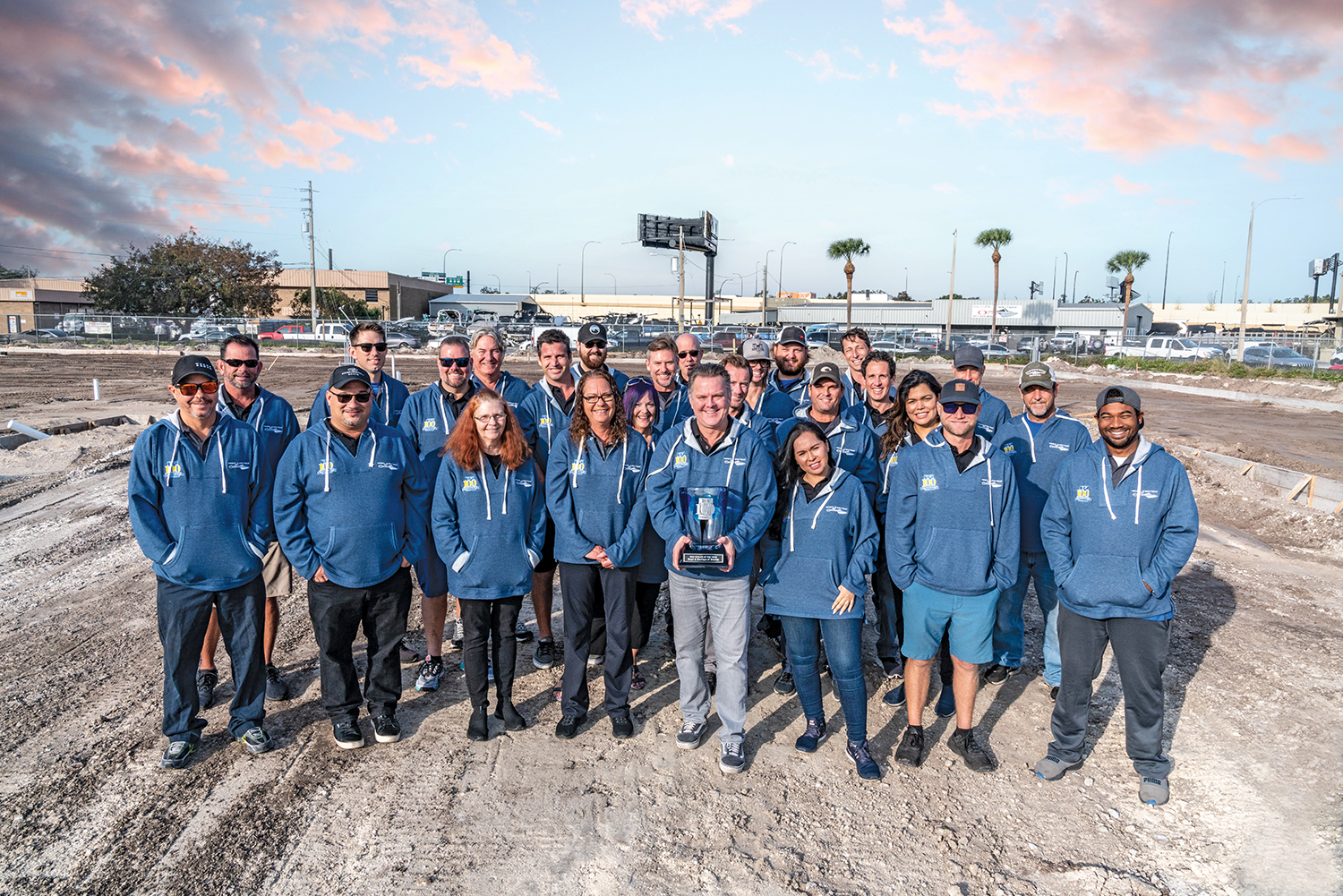Q&A with Ian Atkins, president, Dominion Marine Media

Dominion Marine Media touches many parts of the marine market through its network of websites (Yachtworld, boats.com, BoatTrader), its web services, social media solutions and more.
We talked to Dominion Marine Media President Ian Atkins about some of the technology and industry trends the company is seeing.
Boating Industry: With your network of websites, I’m sure Dominion gets some good insights into market conditions. What are you seeing so far in 2015?
Atkins: The market is on the rise. Industry data and our data are broadly in agreement on that. We’ve seen that consumer traffic to our sites and leads delivered to our dealer and broker members have risen significantly.
 Pontoon boats have been a hugely popular class recently. Their listings were viewed by more than 5 million unique visitors on BoatTrader in the last year — an increase of 18 percent. But traffic to center console listings grew even faster, by 25 percent, to 12 million, far and away the boat class drawing the most interest. Cruisers and bowriders were second and third, with about 6 million visitors each, but the fastest-growing classes by this measure were saltwater fishing boats and express cruisers at 4.8 million and 3.5 million.
Pontoon boats have been a hugely popular class recently. Their listings were viewed by more than 5 million unique visitors on BoatTrader in the last year — an increase of 18 percent. But traffic to center console listings grew even faster, by 25 percent, to 12 million, far and away the boat class drawing the most interest. Cruisers and bowriders were second and third, with about 6 million visitors each, but the fastest-growing classes by this measure were saltwater fishing boats and express cruisers at 4.8 million and 3.5 million.
Looking at YachtWorld’s data on sold boats, which are almost entirely brokerage boats, we’ve noted a growing shortage of recent-model inventory, which has slowed brokerage sales this year by 5 percent through April. Not surprisingly, our members who are both brokers and dealers report healthy new-boat activity beyond expectations. While brokerage inventory is a factor, this is also partly a matter of pent-up demand and partly that builders are increasing new-model output.
Boating Industry: Are there any market trends we can glean from consumer traffic on those sites?
Atkins: Research with our consumers has taught us a lot, which we constantly emphasize to our dealer and broker members. For example, what’s most important to them when they search … 72 percent search first by boat type, then 68 percent, by condition, then 67 percent by price. Make and model is fourth at 55 percent.
We also learned that 48 percent of our site visitors consume boating content on a weekly basis. While nearly 40 percent look for boating news or tips, more than 50 percent are looking for boat reviews. The latter statistic was a primary driver in our introduction of boats.com reviews with listings both on boats.com and BoatTrader in the last year, which has helped us this spring start to deliver editorial video and text stories to more than half a million consumers every month.
Boating Industry: How has the way consumers use those sites changed over the last few years?
Atkins: Throughout the buying process today, consumers expect more information about boats, and they will spend a lot of time searching for that information. They want to be informed when they finally decide to come into a dealership. The real estate and automotive industries provide a lot of information to consumers – price, sales history, condition reports. Those same consumers are shopping for boats and expect to find the same type of information.
More than 50 percent of our traffic is now coming from a mobile device, so the mobile experience is more important than ever. In April, Google began to penalize sites in its rankings if they weren’t mobile friendly, so mobile or responsive sites are no longer a “nice to have.”
Notably, while we’re seeing the traffic increase on mobile devices, like the rest of the industry, we’re not seeing the high levels of conversions taking place on mobile devices. Consumers are tending to go back to the desktop to make an inquiry about a boat.
The listings on our sites that display a price receive 900 percent more views than those with “Call for Price.” What happens next? Dealers get phone calls from consumers who aren’t ready to buy.
Boating Industry: At Miami this year, Dominion announced the .yachts and .boats domains. What does this mean for Dominion and the industry?
Atkins: DMM now puts more than 600,000 boats for sale in front of an audience 52 million-strong every year — and 1 of 8 boats sold in the U.S. is a result of a lead from one of our sites. So there is no shortage of consumers searching for boats. But we feel we have a responsibility and an opportunity to improve that experience and thereby better serve the global marine community. Through these new top-level domains, for the first time in the history of the Internet, we are able to create a verified and gated community of marine Internet sites, where users can be free of doubt in who or what they are dealing with. We are in good company: Amazon and Google have spent more than $18.6 million in application fees alone – and the companies operate almost 200 new domains. Preliminary results conclude that top-level domains create a more trusted and relevant experience for users.
Boating Industry: Do you expect to see large adoption of those domains?
Atkins: We would be surprised — even shocked — if the vast majority of our 5,500 business clients do not adopt one or the other or both. Further, we expect other marine businesses, such as equipment manufacturers, to follow suit.
The domains .boats and .yachts are currently seeking a diverse range of selected brands and individuals to join our founders’ programs. We plan to work closely with our founders, to help them maximize the new opportunities to mark their online territory with the new relevant and meaningful .yachts and .boats gTLDs. And ultimately drive more boat sales globally.
Boating Industry: The whole world of social media, digital marketing, etc., can be overwhelming for dealers and even manufacturers. Any words of advice for helping them figure out how to manage it?
Atkins: We’d all love to have a winning master strategy that delivers instant results on several fronts at once, but with limited resources, we all have to stay focused on what we can manage effectively. Try choosing one new initiative each quarter. Continue to build on those that show results and are within your budget and staff resources.
For instance, in Q1, create a YouTube channel to show off the boats you’ll be featuring at upcoming boat shows. Post those videos on your site and on Facebook with a link to lead form. In Q2, kick off an initiative to ask new and current customers to post reviews on Google when they purchase a boat or when they have their boat serviced for the season. In Q3, post or tweet a bargain boat each Thursday to get someone on the water that weekend with a new boat. And in Q4 as the season winds down, kick off a targeted campaign on Google and/or Facebook. The cost-per-click will be less in the off-season and you’ll be filling the funnel for the new year.
Boating Industry: What’s Dominion’s outlook for the industry for the rest of 2015 and into 2016?
Atkins: As Thom Dammrich has said, we expect to see more of what we’re seeing right now in the U.S. We expect to see increased sales through 2016 and into 2017. By comparison, for those who also do business in Europe, the situation is less clear.
Boating Industry: What do you see as potential obstacles to industry growth? How can the industry address them?
Atkins: We can’t grow unless more people take part. We think a focus on increased trust with the new domains will help that.
But at the level of each company, there’s significant work to do. At DMM, we’ve been moving too slowly and are currently engaged in a massive upgrade to our sites — the pressure on our developers is intense. But it’s not just about technology. We are campaigning hard to encourage manufacturers to adopt a modern approach to pricing rather than listing boats as “call for price.” While our industry maintains old-fashioned sales strategies, the shift in consumer expectations is leading, at best, to tremendous frustration, and at worst, to the likelihood of a generation of potential boaters passing us by.




